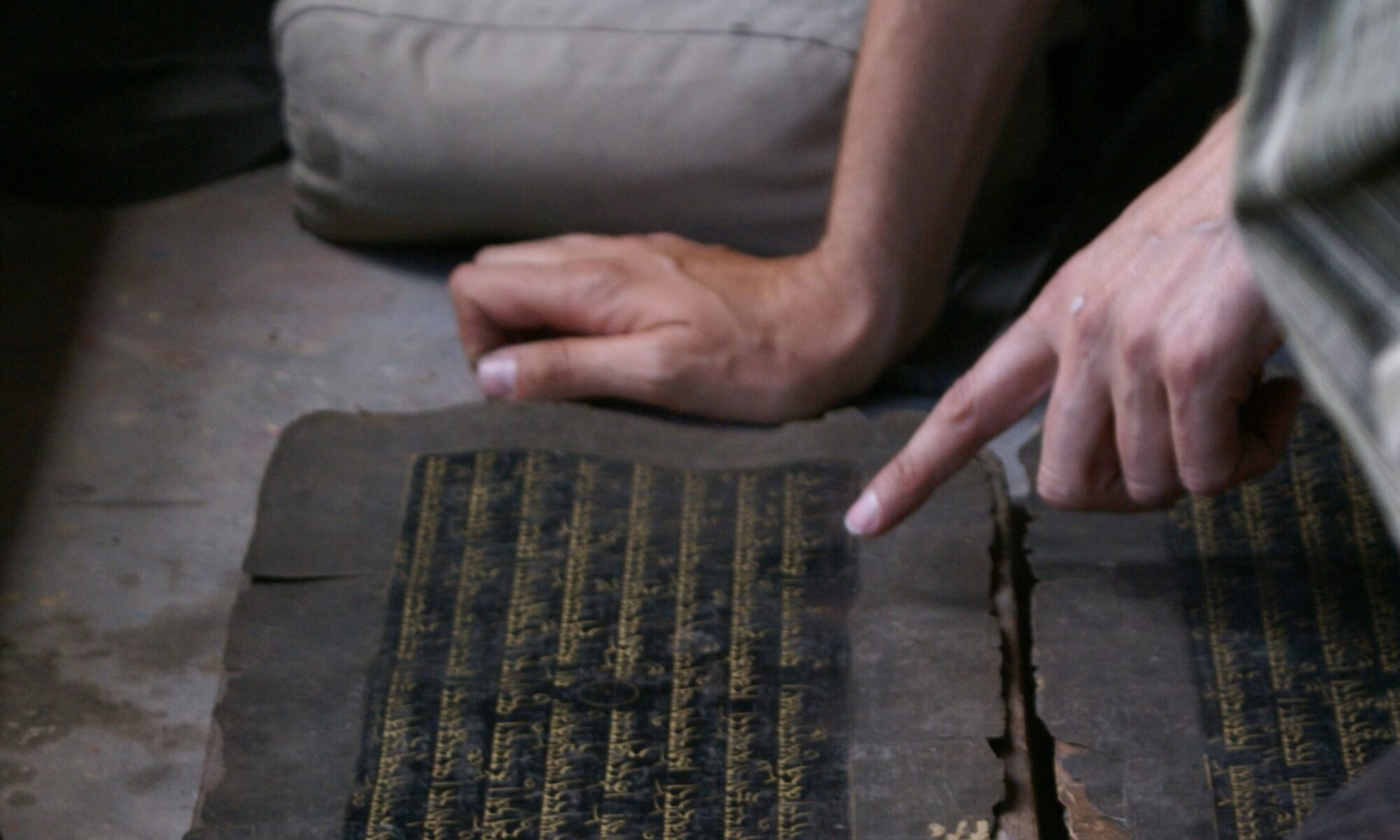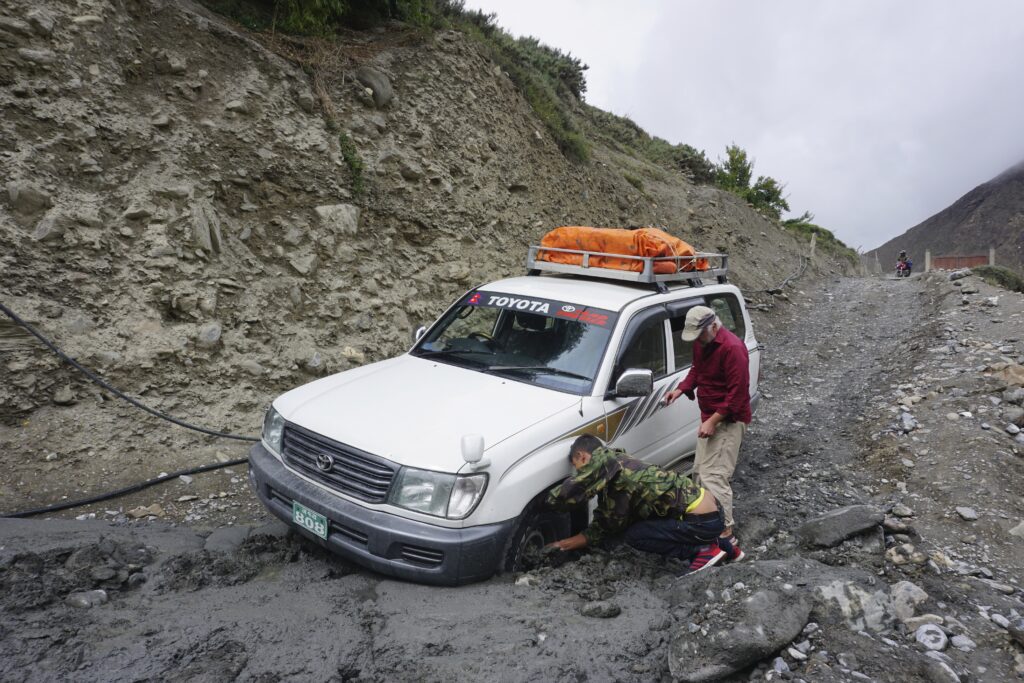
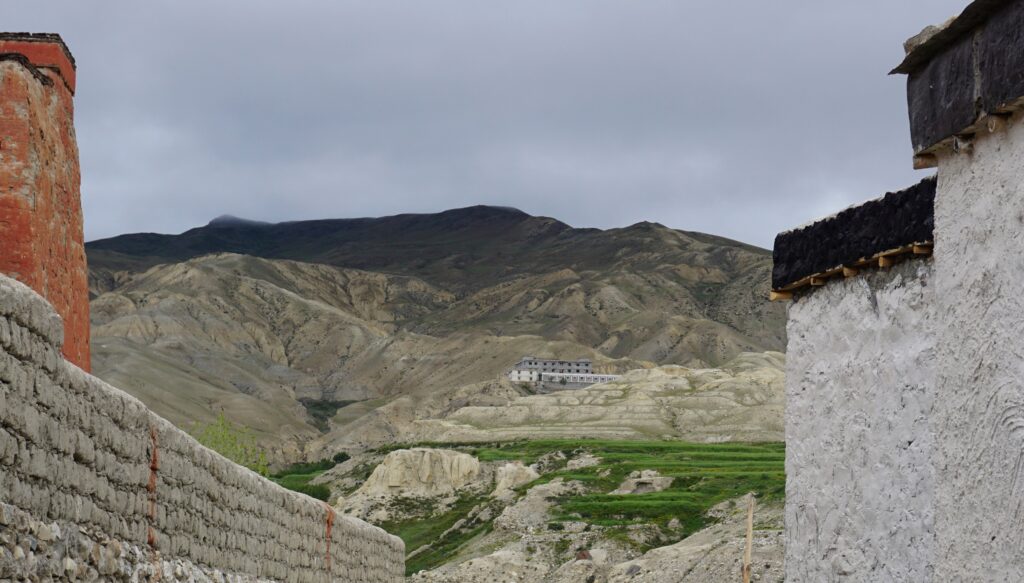
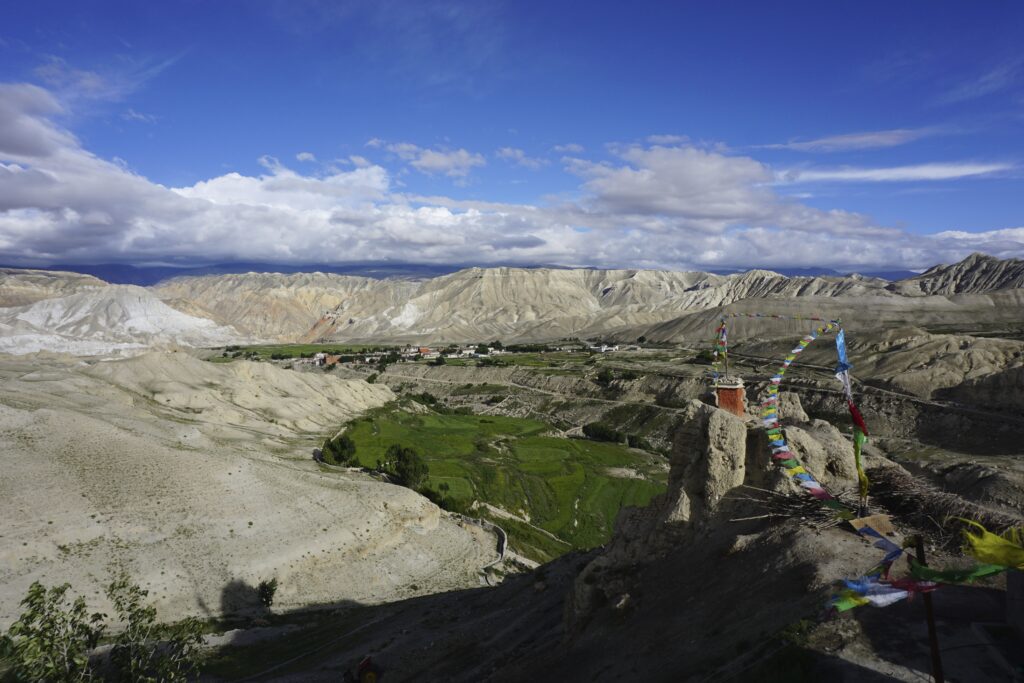
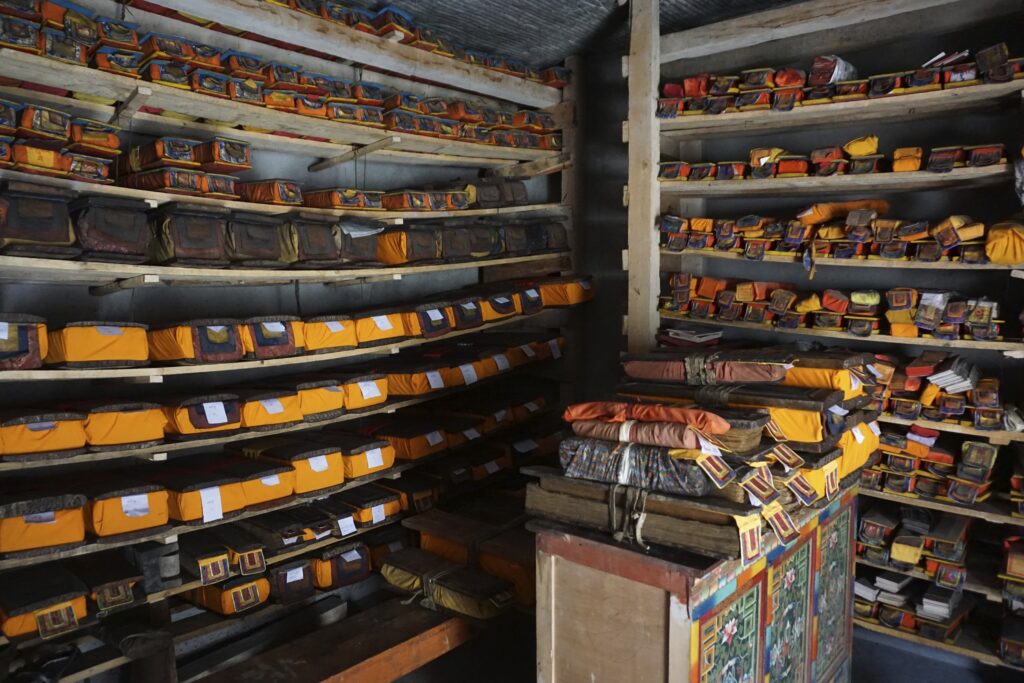
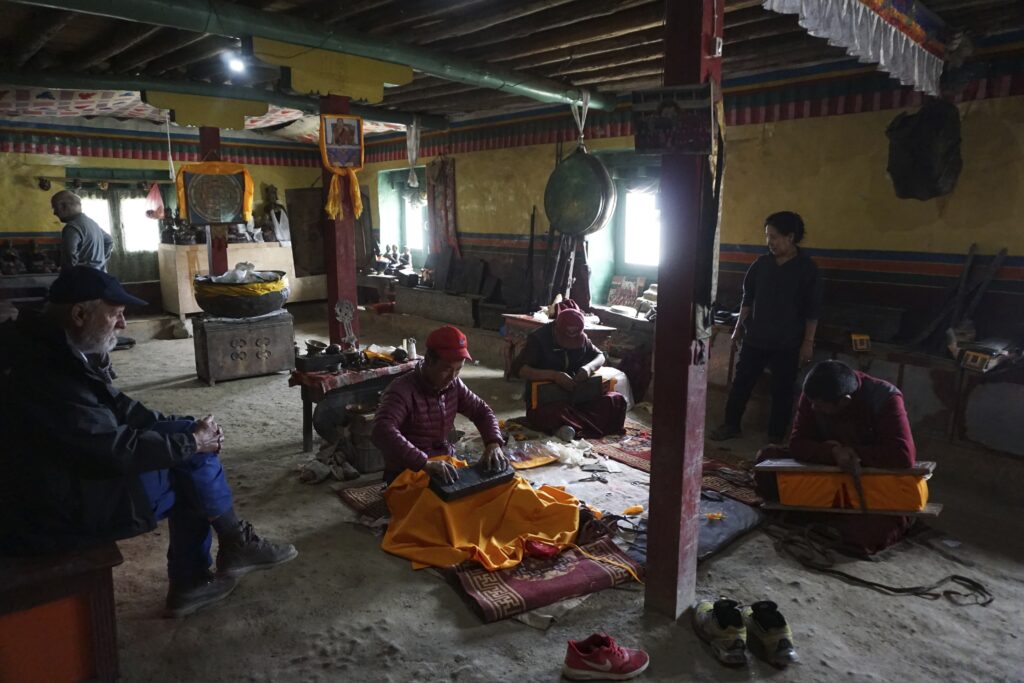
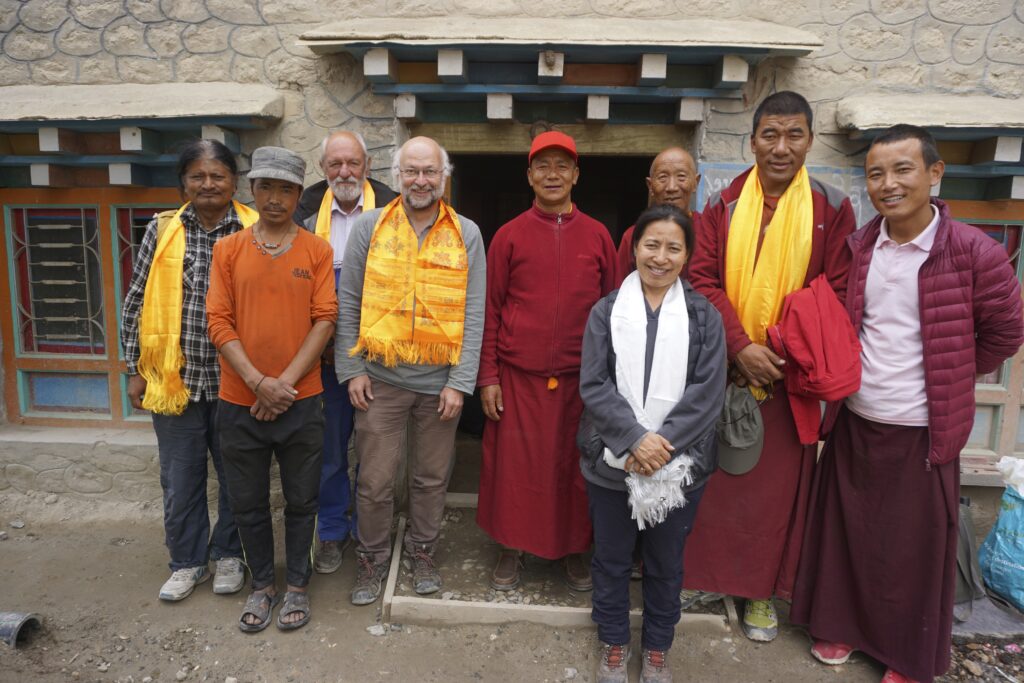
Namgyal (rnam rgyal) Monastery lies at an altitude of ca. 3.850 meters, on a hill west of Lo Manthang, the old capital of the Mustang kingdom. It holds a remarkable collection of Buddhist material culture including statues, thangkas, and manuscripts. In order to prevent them from theft and make them available to research, these objects were documented by Christian Luczanits within the project “Tibetan Buddhist Monastery Collections Today.” Through a collaboration with TMPV in 2017, it became possible to conclude the complete digitization of a larger part of the older Tibetan manuscripts preserved at Namgyal.
Even though parts of the collection are sometimes referred to as a “Kanjur,” the volumes form a heterogeneous collection. Twenty-eight volumes (Ng1-30) are part of a thirty-volume Sūtra collection (mdo sde), of which two volumes (ma and ha) are missing. Fourteen volumes (Ng31-44) constitute a set of the Śatasāhasrikāprajñāpāramitāsūtra (‘bum). A few other volumes (Ng45, Ng46, Ng47) appear to be fragments from other Sūtra collections. One volume (Ng48) is a separate Tog gzungs volume; three volumes (Ng49, Ng50, Ng51) are separate volumes of the Aṣṭasāhasrikāprajñāpāramitāsūtra (brgyad stong), another volume (Ng52) is a separate Gzungs bsdus volume. Some other volumes are yet to be fully documented. Images of the digitized manuscripts as well as catalogue data was implemented in the rKTs archive under the siglum Ng (Namgyal).
Among the various manuscripts, the volumes of the Sūtra collection and Prajñāpāramitā set stand out both in terms of their quality and their age of production. The manuscripts are adorned with intricate illuminations on the first and last folio of every volume and, given their art-historical as well as codicological features, were likely produced not later than at the beginning of the fourteenth century, perhaps earlier. The textual contents and structure of the Sūtra collection seem to represent a stage of canonical development that preceded the model of later structured Kanjurs. Recently, several such Sūtra collections were located and documented in Mustang and Dolpo. All of them are organized in sets of thirty volumes, arranged according to the basic characters of the Tibetan alphabet, and contain about 450 canonical works, several of which are not found in later mainstream Kanjurs. Sometimes, such Sūtra collections were also incorporated in later Kanjurs, as reflected for example in the Early Mustang Kanjur. Textual influences are also felt in some of the Kanjurs preserved in Hemis and Basgo. These Sūtra collections are therefore part of a larger network that spans over different locations in Mustang, Dolpo, and Ladakh, which has been referred to as “Mustang group,” in an attempt to distinguish this network from the different groups of the mainstream Kanjurs. The manuscripts of the Sūtra collection and Prajñāpāramitā set were documented and studied in detail in the following publication: Luczanits, Christian, and Markus Viehbeck. 2021. Two Illuminated Text Collections of Namgyal Monastery: A Study of Early Buddhist Art and Literature in Mustang. Kathmandu: Vajra Books.
